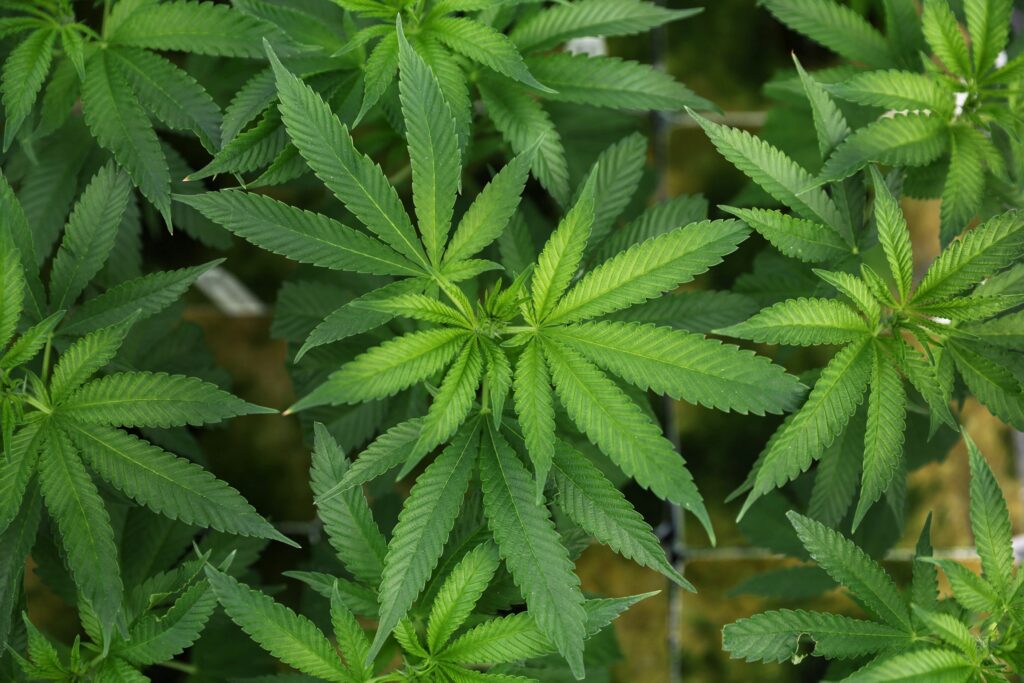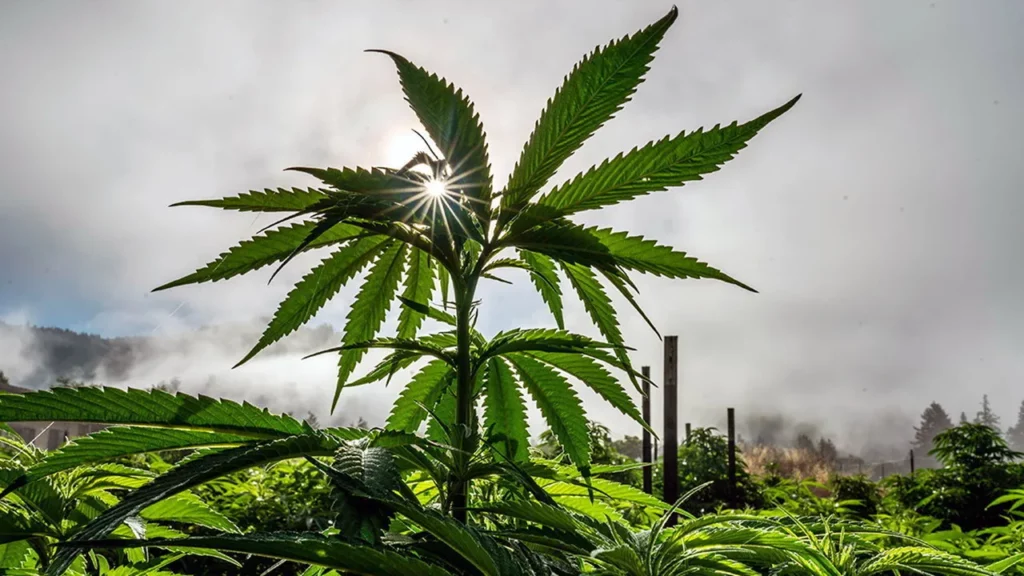Introduction
Cannabis cultivation has evolved significantly over the years, transitioning from clandestine outdoor operations to sophisticated indoor setups. Indoor cannabis growing offers greater control over environmental factors, resulting in higher-quality yields and increased potency. However, mastering the fundamentals of indoor cultivation requires a blend of science, art, and dedication. In this guide, we’ll explore the essential elements of indoor cannabis growing, equipping beginners with the knowledge needed to embark on their cultivation journey confidently.
Understanding the Basics

Embarking on the journey of indoor cannabis cultivation is both an art and a science, offering enthusiasts the opportunity to cultivate premium-quality buds within the confines of their own space. Unlike outdoor growing, indoor cultivation provides growers with precise control over environmental factors, resulting in higher yields, enhanced potency, and consistent quality. However, navigating the intricacies of indoor cannabis growing requires a solid understanding of the fundamentals, from selecting the right space to mastering nutrient management and lighting techniques.
In this comprehensive guide, we delve into the essential elements of indoor cannabis cultivation, equipping beginners and experienced growers alike with the knowledge and tools needed to cultivate thriving plants from seed to harvest. Whether you’re setting up your first grow room or seeking to refine your techniques, this guide will serve as a valuable resource, offering insights, tips, and best practices gleaned from years of experience and research. From optimizing environmental conditions to selecting the right genetics and mastering harvesting and curing techniques, join us as we unlock the secrets to successful indoor cannabis cultivation.
1. Choose the Right Space
Selecting an appropriate space is paramount in creating an optimal environment for indoor cannabis cultivation. Factors such as available square footage, access to electricity and water, and ventilation must be carefully considered. A spare room, closet, or dedicated grow tent can serve as an ideal environment, offering privacy and control over environmental variables.
Ensure the chosen space is easily accessible for maintenance tasks and equipped with adequate electrical outlets to support grow lights and other equipment. Additionally, proper ventilation is essential for regulating temperature and humidity levels, preventing mold and mildew, and promoting healthy plant growth. By thoughtfully selecting and preparing the cultivation space, growers can lay the foundation for successful indoor cannabis cultivation.
2. Controlled Environment
Unlike outdoor cultivation, indoor growing offers growers unparalleled control over environmental variables critical to cannabis cultivation, such as temperature, humidity, and light cycles. This level of control empowers growers to create a tailored environment that optimally supports plant growth and development throughout each stage of the cultivation process. Investing in quality equipment is essential to achieving this level of precision. Grow lights, such as high-pressure sodium (HPS), metal halide (MH), or light-emitting diodes (LEDs), provide the necessary light spectrum for photosynthesis and can be adjusted to mimic natural sunlight. Additionally, fans and ventilation systems help regulate temperature and humidity levels, preventing heat stress and mold growth.
Humidifiers and dehumidifiers further fine-tune environmental conditions, ensuring the plants receive the ideal balance of moisture. By investing in the right equipment and diligently managing environmental factors, indoor growers can create an optimal growing environment that maximizes yields, potency, and overall quality.
3. Selecting Genetics
The genetic makeup of cannabis plants is a cornerstone of successful cultivation, influencing various aspects of plant growth, potency, and yield. When selecting seeds or clones, it’s essential to choose high-quality genetics from reputable sources to ensure desirable traits and consistent results. High-quality genetics exhibit traits such as robust growth, disease resistance, and the ability to thrive in indoor environments. Additionally, reputable seed banks or clone providers offer assurances regarding the genetic purity and authenticity of their products, minimizing the risk of receiving mislabeled or inferior specimens.
Carefully research different strains and their characteristics to identify those best suited to your cultivation goals and preferences. Whether you prioritize high potency, specific cannabinoid profiles, or unique flavor profiles, selecting the right genetics lays the foundation for a successful harvest. Furthermore, maintaining genetic diversity within your cultivation space can safeguard against issues such as pests, diseases, and environmental stressors, enhancing overall resilience and crop stability.
By investing in high-quality genetics and conducting thorough research, growers can optimize their indoor cultivation efforts, producing top-tier cannabis with exceptional potency, flavor, and yield.
4. Nutrient Management
Cannabis plants require a balanced diet of essential nutrients to thrive. Utilize nutrient-rich soil or hydroponic systems supplemented with fertilizers specifically formulated for cannabis cultivation. Monitor pH levels regularly to prevent nutrient deficiencies or imbalances.
5. Lighting
Light plays a pivotal role in cannabis growth and development, influencing processes such as photosynthesis, flowering, and cannabinoid production. When cultivating indoors, selecting the appropriate grow lights is essential to mimic natural sunlight and optimize plant growth. High-pressure sodium (HPS), metal halide (MH), and light-emitting diodes (LEDs) are popular options, each offering unique benefits and light spectrums tailored to different stages of plant growth.
Furthermore, adjusting light cycles according to the plant’s growth stage is crucial for maximizing productivity and quality. During the vegetative stage, providing 18-24 hours of light promotes vigorous growth and lush foliage. Conversely, transitioning to a 12-hour light cycle during the flowering stage stimulates bud development and initiates the flowering process. By carefully managing light intensity, spectrum, and duration, growers can enhance yields, potency, and overall crop quality.
4. Ventilation and Airflow
Proper airflow and ventilation are critical components of a successful indoor cannabis cultivation environment. Effective ventilation not only helps regulate temperature and humidity but also prevents the buildup of stagnant air, which can lead to mold, mildew, and pest infestations. Installing exhaust fans, oscillating fans, and carbon filters is essential to maintain adequate air circulation and promote optimal growing conditions.
Exhaust fans draw stale air out of the grow space, removing excess heat, humidity, and odors. Oscillating fans help distribute air evenly throughout the canopy, preventing hot spots and ensuring that all plants receive adequate airflow. Additionally, carbon filters help neutralize odors, keeping the cultivation operation discreet and minimizing the risk of attracting unwanted attention.
By investing in proper airflow and ventilation systems, growers can create a healthy and productive indoor growing environment. Consistent air circulation not only promotes robust plant growth but also mitigates the risk of common cultivation challenges, ultimately leading to higher yields and better-quality cannabis.
5. Monitoring and Maintenance
Regular monitoring and maintenance are indispensable practices for indoor cannabis growers seeking to achieve optimal results. By keeping a vigilant eye on plant health, growers can detect and address issues promptly, minimizing the risk of crop loss or reduced quality. Observing plant foliage for signs of discoloration, wilting, or pest infestations allows growers to intervene early, implementing appropriate remedies to restore plant vigor.
Maintaining a consistent watering schedule is crucial for preventing over- or under-watering, which can lead to nutrient imbalances or root rot. Additionally, monitoring environmental conditions such as temperature, humidity, and CO2 levels ensures that plants remain within their optimal growing range.
Regular pruning is another essential aspect of cultivation maintenance, as it helps manage canopy density, improve airflow, and maximize light penetration to lower foliage levels. Removing excess foliage also reduces the risk of mold and pest infestations by improving air circulation throughout the grow space.
By incorporating regular monitoring and maintenance into their cultivation routine, indoor growers can proactively address issues, optimize plant health, and ultimately achieve higher yields and superior-quality cannabis.
6. Harvesting and Curing
Harvesting cannabis at the optimal time is a pivotal step in the cultivation process, influencing the potency, flavor, and overall quality of the final product. Monitoring trichome development is a key indicator of readiness, as these resinous structures contain the cannabinoids and terpenes responsible for the plant’s effects and aroma. Using a magnifying glass, observe the trichomes closely, aiming to harvest when they appear milky white with some amber hues. At this stage, the plant has reached its peak potency, offering a balance of THC, CBD, and other desirable compounds.
Following harvest, proper curing is essential to preserve the integrity of the buds and enhance their flavor and aroma. Slow drying in a controlled environment, ideally with moderate humidity and consistent airflow, allows the buds to release excess moisture gradually while retaining their essential oils and terpenes. This curing process can take anywhere from one to three weeks, depending on environmental conditions and personal preference. Patience is key during this stage, as rushing the process can compromise the final product’s quality. By adhering to these harvesting and curing practices, indoor cannabis growers can maximize the potential of their harvests, producing premium-quality buds with exceptional potency and flavor.
Also Read: Harvesting Cannabis: A Guide to Reaping Nature’s Bounty
Conclusion
Indoor cannabis growing offers unparalleled control over the cultivation process, allowing growers to produce high-quality buds year-round. By mastering the fundamentals outlined in this guide, beginners can embark on their indoor cultivation journey with confidence. Remember, successful cannabis cultivation requires patience, attention to detail, and a willingness to learn from both successes and failures. With dedication and perseverance, you can cultivate premium-quality cannabis in the comfort of your own home.

